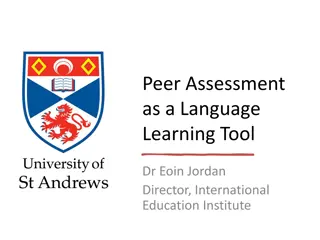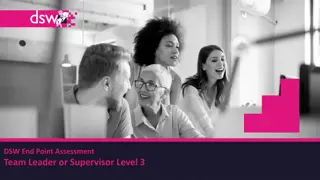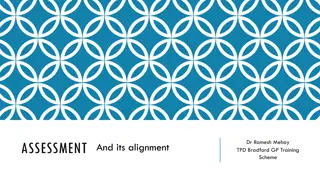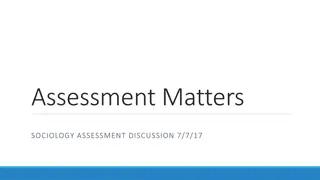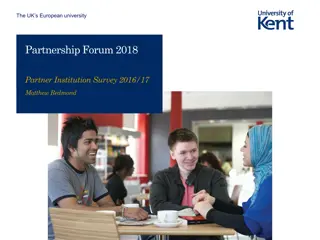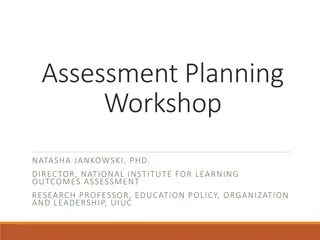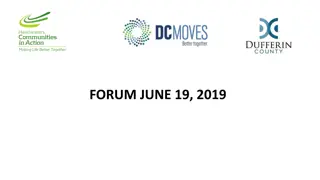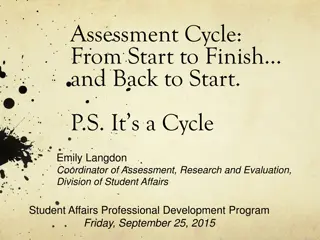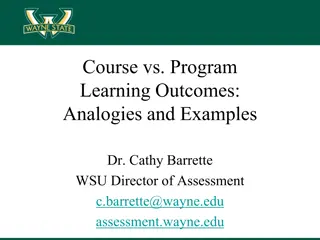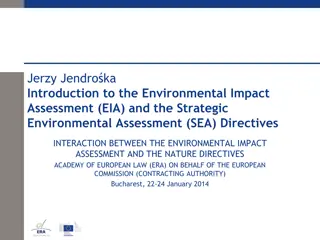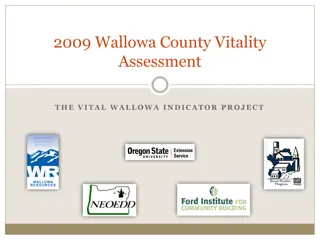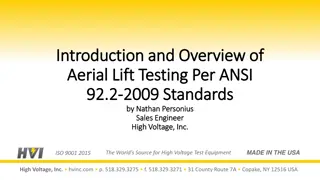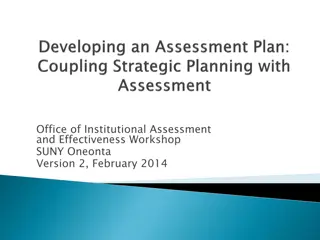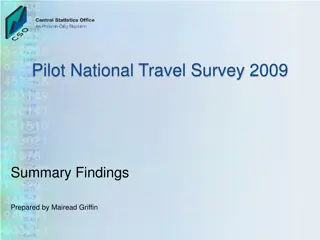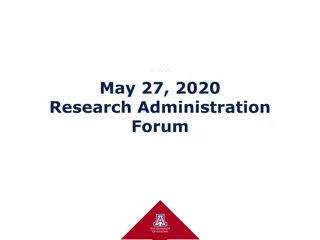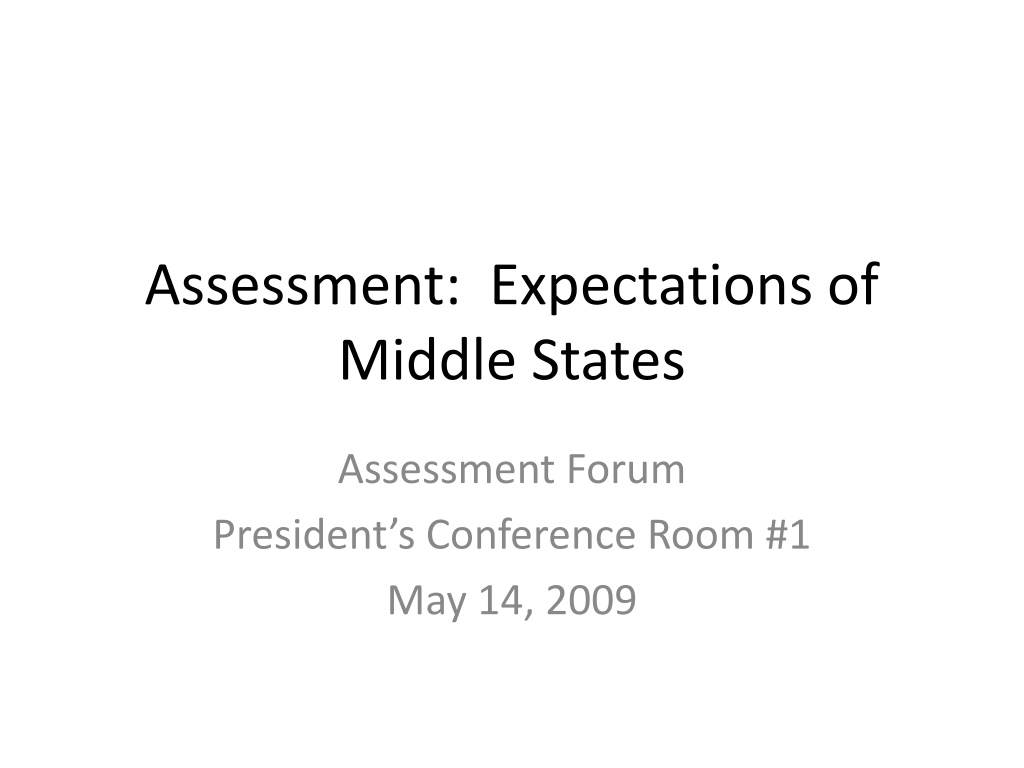
Middle States Assessment Expectations and Guidelines
Explore Middle States assessment expectations, outcomes committee, student learning standards, and best practices. Learn about individualized assessment approaches, accreditation history, and what Middle States looks for during institutional visits.
Uploaded on | 0 Views
Download Presentation

Please find below an Image/Link to download the presentation.
The content on the website is provided AS IS for your information and personal use only. It may not be sold, licensed, or shared on other websites without obtaining consent from the author. If you encounter any issues during the download, it is possible that the publisher has removed the file from their server.
You are allowed to download the files provided on this website for personal or commercial use, subject to the condition that they are used lawfully. All files are the property of their respective owners.
The content on the website is provided AS IS for your information and personal use only. It may not be sold, licensed, or shared on other websites without obtaining consent from the author.
E N D
Presentation Transcript
Assessment: Expectations of Middle States Assessment Forum President s Conference Room #1 May 14, 2009
Outcomes Assessment Committee Meg Mcauliffe Dean Savage Eva Fernandez Claudia Perry John Walker Fern Sisser Sonia Rodrigues OIR Sociology LCD, CTL GSLIS, CTL Accounting Math Education Craig Michaels El r Armour-Thomas SEYS Ken Lord Marian Fish Michael Toner Monica Casco ECP EdTech, UCC, CS ECP FNES HLL
Standard 14 Assessment of Student Learning Assessment of student learning demonstrates that, at graduation, or other appropriate points, the institution s students have knowledge, skills, and competencies consistent with institutional and appropriate higher education goals. from: Characteristics of EXCELLENCE in Higher Education - Requirements of Affiliation and Standards for Accreditation MSCHE http://www.msche.org/publications/CHX06_Aug08REVMarch09.pdf
Leading up to the Higher Education Act of 2008, accrediting agencies hired a lobbyist to forestall a one- test-for-all approach. Middle States supports individualized assessment approaches at the institutional, program and course level.
Five Rules Keep it useful Tie assessments to important goals Include some direct evidence (the kind a critic wouldn t argue with) Use multiple measures Keep doing something every year from Linda Suskie, Vice President Middle States Commission on Higher Education
What Middle States Will Look For During a Visit Individual assessment findings/reports/uses by program (not course). You can create a grid with a list of programs along the left side and along the top, the institution s determination of where each program is: Has learning goals for program level and each course syllabus Has assessed some/all Has documentation of how results were used Has plan to assess Has Results Using Results Program #1 Program #2 Program #3 Program #4 Program #5 Program #50 Want to see rubrics so they can see if they align with goals. After several years of emphasizing assessment, Middle States is now expecting institutions to be close to doing 100% of what is needed for assessment, not just having plans. . . .
Want to see samples of student work including what got an F and what a C, to show rigor. Assessment information does not all have to be in one, single fancy format. Where most institutions have the most trouble with assessment is in using the results to then make changes; the loop must be closed. The loop closing doesn t have to be complicated- just shouldn t be we re discussing this. Would like to see an online folder or notebook for every degree program, including for liberal arts. All syllabi should have statements of learning outcomes. All assessment information does not need to be quantitative. Middle States is not looking for elaborate data systems, and they do not seem to recommend buying software to do assessment unless it s necessary (e.g., for NCATE). Must show that campus has regular program reviews that include student learning outcomes. Focus should not be on assessment results themselves, but on using the results to improve. (Linda Suskie, March 2009)
Queens College Self Study February 2007 1. The existing Outcomes Assessment Committee, chaired by the Associate Provost, should be enlarged and encouraged to take a wider and more proactive role across campus in promoting, explaining, and coordinating assessment efforts. Once outcomes data are collected, for example, the Committee could work with administration to disseminate these findings, and to create forums through which such information can be utilized to make decisions on program improvement. 4. The incoming general education requirements should maintain outcomes assessment as an integral part of the implementation of this new program. . . . 5. The College should continue to invest in appropriate information technology resources to enable evaluation efforts like the NCATE test to expand throughout the College, to help students develop portfolios, and to facilitate other tasks such as analysis. 6. One crucial aspect of the College s educational mission that has not yet been effectively assessed is the effort to teach tolerance and celebrate diversity in our increasingly global world. . . . the College should study how successfully it promotes access, tolerance, and mutual understanding to the full range of our diverse student body, whether distinguished by physical disability, gender, ethnicity, religion, or sexual orientation. http://qcpages.qc.cuny.edu/provost/MidStates/Self-studyFINAL7MarchLV.pdf
from Student Learning Assessment, MSCHE http://www.msche.org/publications/SLA_Book_0808080728085320.pdf
Step One Syllabi * Follow guidelines and models at: http://qcpages.qc.cuny.edu/provost/Cur_stud/ModelSyllabus2009 MARCH12.htm * Incorporate learning goals that connect with the narrative, assignments, and schedule. Learning goals should be approved at the department level. * Insure that every line in the syllabus adds value for the student. * Collect all syllabi within department, and provide feedback.
Learning Goals * Focus on outcomes, not process * Clear no fuzzy terms * Observable, use action words * Are goals important, lasting? Critique these fuzzy examples: Demonstrate understanding of other cultures. Demonstrate ability to work effectively with computer components. Adapted from Linda Suskie, York College presentation, 3/09
Step 2 Select a task or tasks for next year * Choose from among the most important challenges facing the department, with short term impact on students. * Choose a task where evidence is required to determine the best course of action. * Possibilities include the introduction of a new classroom technology, change of format (recitations), a new capstone course, creation of a student organization, portfolio study, etc.
Step 3 Collect model student work, exams, and syllabi Collect assessable materials that the program might examine via rubrics Participate in e-portfolio pilot
Step 4 Develop learning goals for the program, and build an assessment plan around these goals * Goals should be observable, and focused on outcomes. * Consider use of rubrics to allow for assessment of student work in relation to the goals.
In conclusion: * Steps 1, 2, and 3 Start now. Complete Step 4 by December. Close loop for first task (Step 2) by December 2010. MS PRR 2012. * Provide updates to your divisional dean beginning this semester * Send goals and plans to the Associate Provost, so that they may be shared with the Outcomes Assessment Committee * Use CTL resources, and attend workshops.


